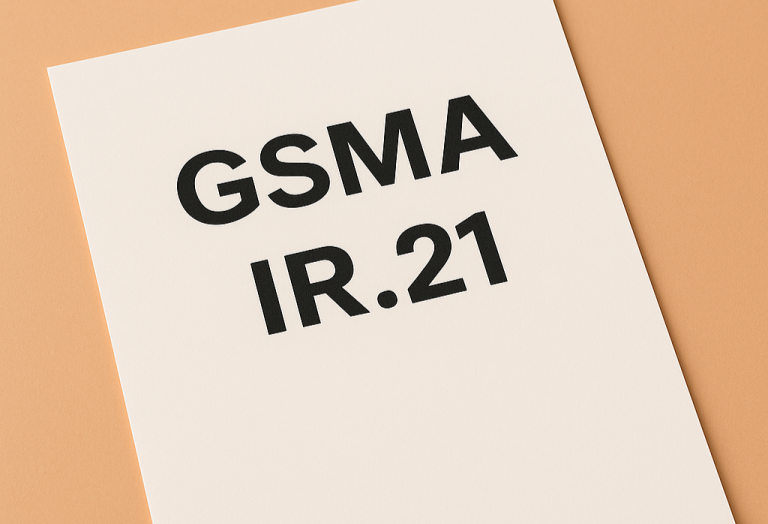In the world of mobile telecommunications, international roaming has become second nature. We take our smartphones abroad and expect to make calls, send texts, or use the internet seamlessly—just like at home. But behind this apparent simplicity lies a complex infrastructure and global cooperation between mobile networks. A key component of this system is the IR.21 document, developed by the GSM Association (GSMA). In this article, we explain exactly what IR.21 is, how it works, and why it is so essential for cross-border mobile communication.
What is IR.21?
IR.21 is an official document from the GSM Association that describes the structure and procedures for managing the GSM Association Roaming Database. This database forms the backbone of international roaming and contains crucial information about the networks of mobile network operators (MNOs) worldwide.
The GSM Association Roaming Database
This database is designed to manage and keep roaming agreements between various MNOs up to date. Think, for example, of agreements between KPN in the Netherlands and Orange in France, allowing users of both networks to access each other’s infrastructure when abroad.
Why is this database important?
Without this database, roaming would not be possible. When you turn on your phone in a foreign country, your device must quickly connect to a local network. This requires network information, routing rules, and access settings—all of which are documented in IR.21 and made available through the roaming database.
What does an IR.21 document contain?
Each IR.21 document is unique to a specific MNO and includes, among other things:
- Network elements (such as MSCs, GGSNs, and IP addresses)
- Routing information (for voice, SMS, and data)
- Technical specifications of the network
- Subscription management data
- Security protocols and authentication rules
This enables network operators around the world to communicate with one another and correctly identify and connect each other’s users.
How is this information kept up to date?
In addition to describing the database contents, IR.21 also outlines the procedures for updating information. For example, when an operator brings a new network node online or signs a new roaming agreement with another party, this must be promptly and accurately recorded and shared in accordance with IR.21 guidelines.
Conclusion
IR.21 may be a technical document, but its impact is felt by all of us—every time we use our phone outside our home country. Thanks to the structure and standardization provided by the GSMA, mobile networks around the world can work together seamlessly, keeping users connected no matter where they are. Want to know more? Feel free to contact one of our specialists.
Need reliable IoT SIM cards? Request our test kit for 3 free SIMs with 100 MB data for 3 months. Experience seamless IoT connectivity today.
Looking for a reliable IoT partner? Download our brochure for instant access to valuable insights about our services and IoT solutions.
